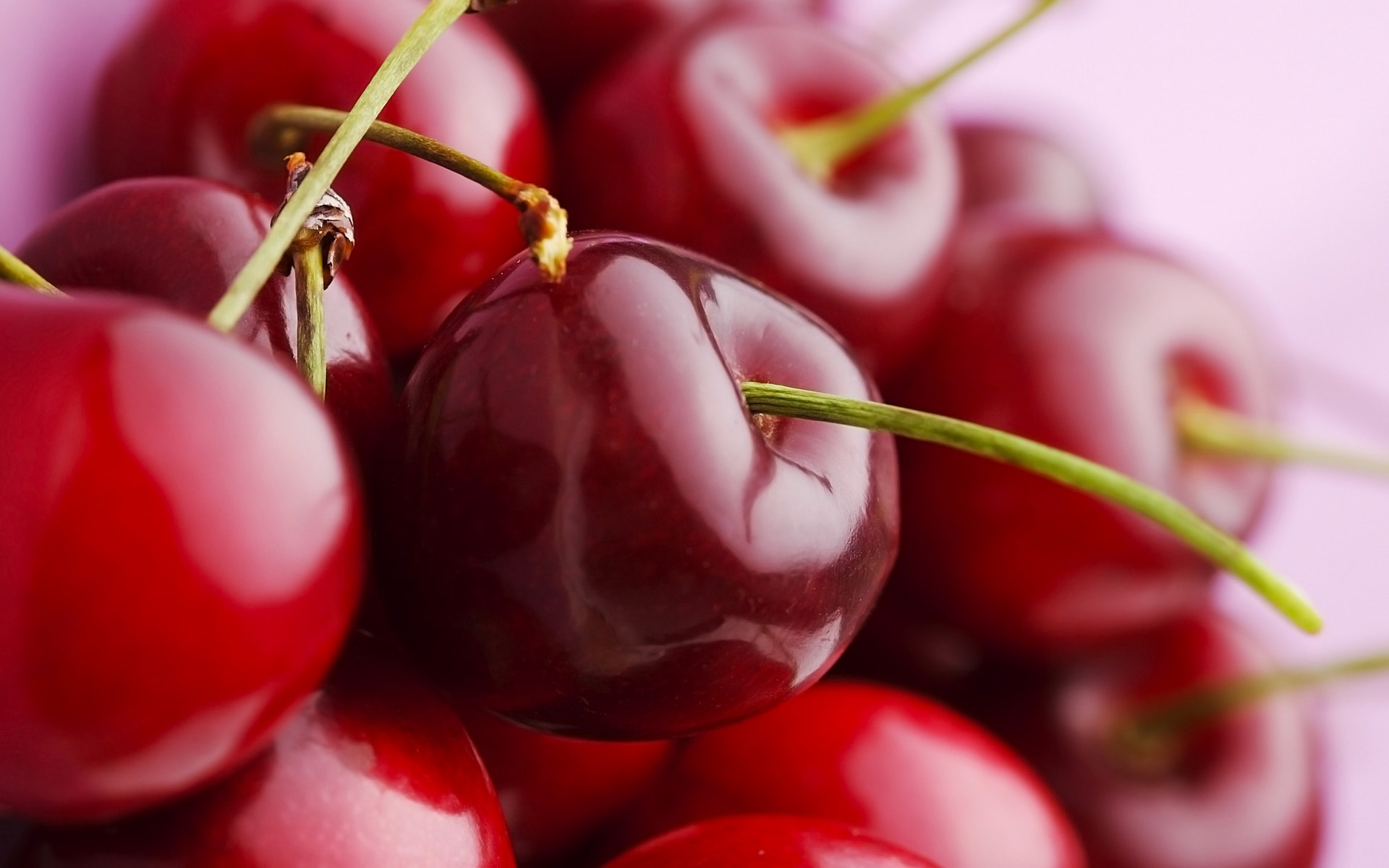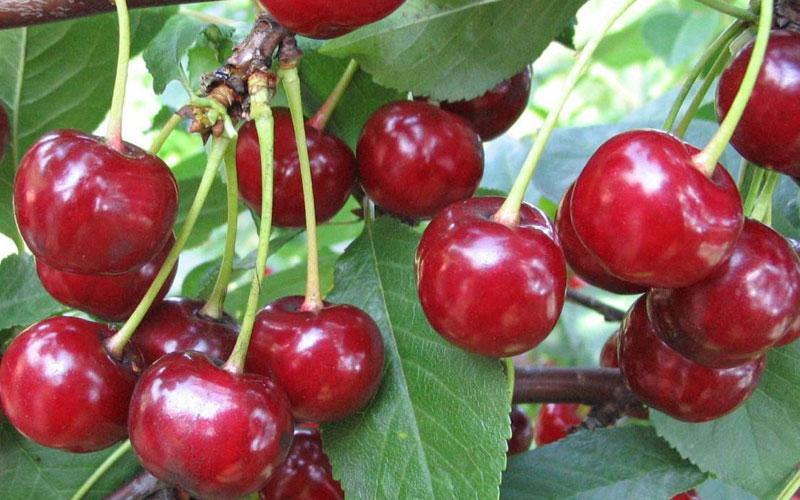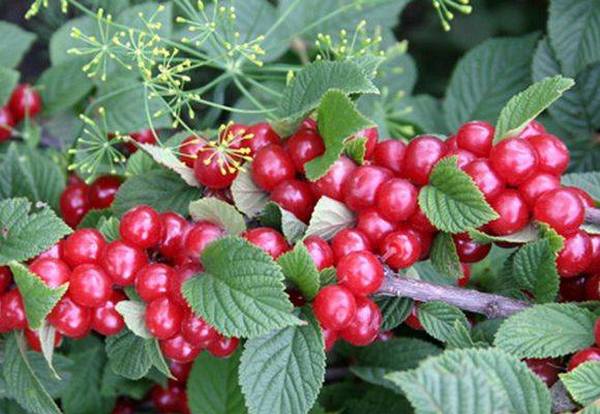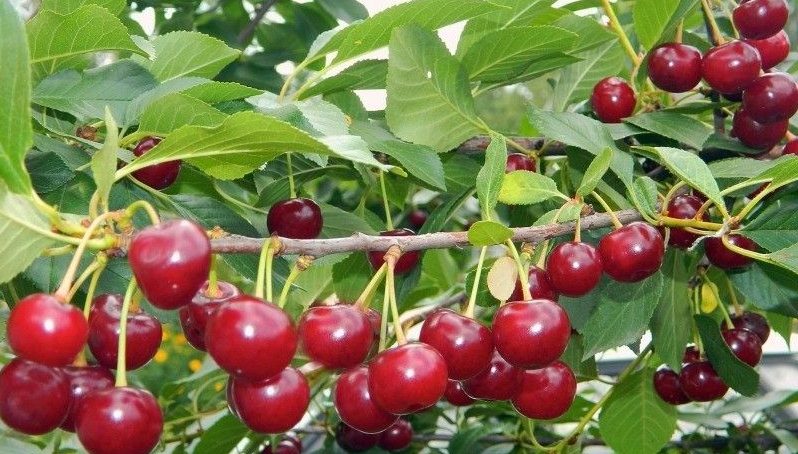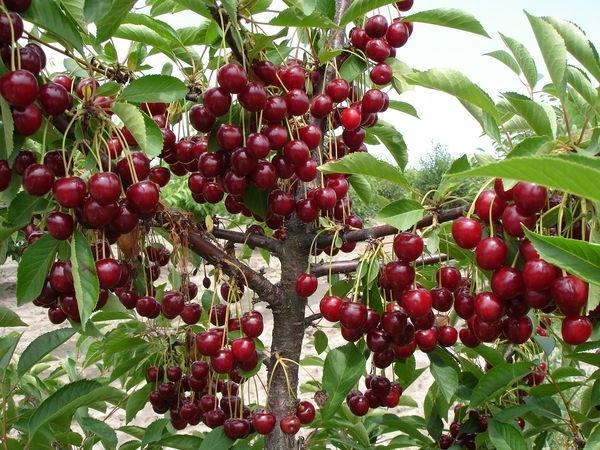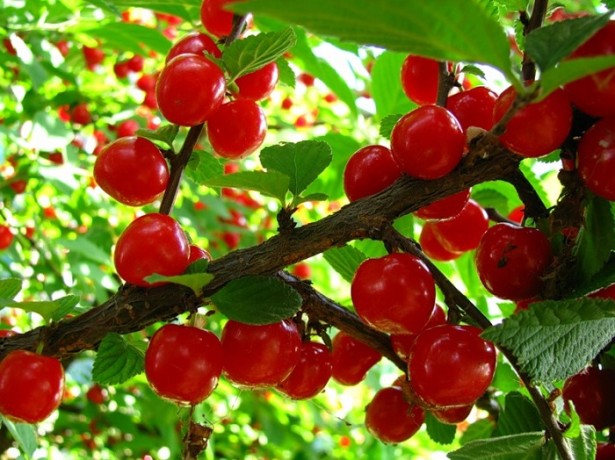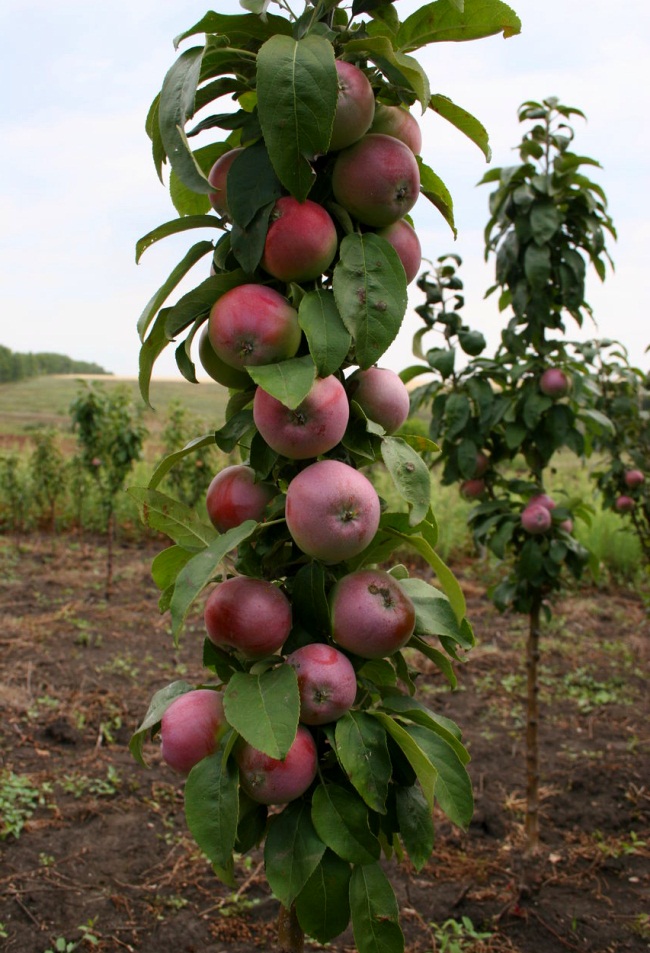Content:
Moscow region is an area where fruit and berry crops do not have the opportunity to grow intensively and give a rich harvest. Trees are affected by sudden temperature changes and snowless winters with severe frosts. Therefore, breeders have developed completely new cherry varieties that adapt to the weather conditions of the central part of Russia: the best cherry varieties for the Moscow region.
About Cherry
Cherry is a crop that has been cultivated near the house for a long time. She adorned the front garden with her appearance, and when used, provided healing properties.
Origin
It is impossible to accurately determine the moment when cherries appear as a home fruit and berry plant. Its appearance is recorded in the X-XI centuries. on the found cherry pits on the remains of sites that previously lived in Switzerland, Italy and Germany.
In the writings of the historian Pliny, cherry takes its origin from the city of Kerasund, located in Asia Minor on the shores of the Black Sea.
The appearance of cherries in Russia is associated with Prince Yuri Dolgoruky in the XII century. His son brought the first seedling from Suzdal and planted a garden in the village. Bogolyubov. In these places, the variety Vladimirovna was obtained. After that, the culture gradually spread throughout all the territories of present-day Russia.
Healing properties
It contains a huge amount of nutrients, vitamins and trace elements. The berries contain various organic acids.
What kind of culture
When grown, the plant can be formed in the form of a tree with a central trunk (standard) or a shrub with several flexible shoots. The tree is taller than the bush, stretches up to 7 m. It begins to give berries from 2-4 years after rooting. Duration of residence under favorable conditions is 20-30 years. In the northern regions, the duration of fruiting is 15-20 years.
Treelike varieties of stone fruit culture include Turgenevka, Orlitsa, Tyutchevka, Rastunya, Rastarguyevskaya, Zhukovskaya, Ptichya. Shrub cherry for the Moscow region is represented by varieties: Otechestvennaya, Lyubskaya, Rannaya, Oblachinskaya, Lyubimitsa, Bolotovskaya, Shyenchivaya, Kubanskaya, Bull's heart and Flame.
Scope of application
Cherries are usually used fresh. It allows you to improve a person's condition in various diseases, increase hemoglobin. It is recommended as a prophylaxis for diseases of the heart muscle and circulatory system. It is useful to drink juice from fresh berries during pregnancy in any trimester.
For a therapeutic effect, use a decoction based on cherries or berry stalks. To eliminate cramps, it is recommended to use a decoction from the bark, and in case of stomach ulcers, from the roots. For colitis and diarrhea, a decoction from young shoots of the plant is suitable. The foliage is collected for medicinal fees.
The fruits, mashed into a homogeneous gruel, are used in cosmetology to narrow open pores on oily skin.
Rating of popular varieties for the Moscow region
Few varieties have been bred for central Russia.There are only 37 varieties that have established themselves as plants that can withstand instability of weather conditions, giving high-quality and stable yields. They also have good resistance to pathogenic bacteria and parasites. The TOP-10 varieties are singled out in order to get to know better which cherry is best suited for the Moscow region:
- Cherry Apukhtinskaya - the advantage of the variety is its increased frost resistance, withstanding up to -300C. The species is resistant to common diseases.
Due to the small growth, not reaching an average of 3 m, harvesting is not difficult. Due to the formation of the form of a plant in the form of a bush, when describing the variety, it is indicated for Apukhtinskaya cherry that it practically does not require care. irrigation and application of complex fertilizers are periodically carried out.
Under the right growing conditions, the culture gives the first berries for 2 years. At the same time, the variety is not planted near other plants due to the fact that it is not suitable for cross-pollination. With the onset of early cold weather, it may not have time to ripen and drop the berries.
- Youth - due to its small stature - up to 2.5 m in height, the fruits are easily collected. The plant easily tolerates low temperatures and is not susceptible to diseases of cherry crops. The variety gives crops in increased volume.
In hot and humid climates in the summer, it is often infected with fungal diseases. When buds appear in the spring in warm windows, they can freeze under return frosts. The plant is bushy in shape.
The fruits have a sweet and sour aftertaste, the berries are harvested from mid to late July. On average, up to 40 kg of fruits are removed from one tree. When planting, the soil is not important, but it grows best in sunny, elevated areas of the garden in sandy soil.
- Shokoladnitsa - the tree stretches up to 2.5 m. It is a self-fertile variety. The reduced temperature has no effect on the variety. Easily tolerates lack of nutritious moisture on hot summer days.
The downside is fruiting only 4 years after planting. The plant is susceptible to coccomycosis and monoliosis.
- Turgenevskaya - easily tolerates minus temperatures up to -270C, even in the absence of snow. Not susceptible to the most common diseases. Due to the low growth - up to 3 m, the collection of fruits takes place without complications. The fruits are large in weight: 6 grams. each berry. Because of this, a large amount of berries is removed from the tree - up to 25 kg.
Excellent long-distance transportation. Of the minuses - he is afraid of returnable spring frosts on the released kidneys. It does not have the ability to self-pollinate, so neighbors are required for cross-pollination: In memory of Sakharov, Oktava, Zherdevskaya Krasavitsa, Troitskaya or Komsomolskaya.
- Cherry Griot Moscow - has matte foliage and a spherical crown. The berries are medium in size (3.5 gr.), Have a sweet and sour aftertaste. They ripen in July, are distinguished by increased productivity and good winter hardiness. Not afraid of return frosts in early spring on swollen buds. But at the same time, he is often exposed to diseases such as coccomycosis and monial burns.
- Volochaevka is a self-fertile plant. Not susceptible to low temperatures, does not get infected with diseases of cherries and cherries. Of the minuses - small berries and the opportunity to get the first harvest appears only at the 4th year of life. The berries are sweet and sour, the height of the tree does not exceed 3 m, so the harvest is not difficult.It is possible to harvest up to 15 kg from one tree under good conditions. The fruits ripen by the end of July.
- Fairy - belongs to the category of dwarf, does not reach 2 m. Tolerates frosts, at strong subzero temperatures, it is better to cover. Resistant to fungal diseases. Allows you to harvest a good harvest. Fruits are large, up to 3.5 grams. Ripen by the end of the first summer month. Fruiting only for 4 years, but it can remove up to 12 kg from the tree.
- Radonezh - easily tolerates a strong drop in temperature in the winter months and spring return frosts. It can partially pollinate itself - by 40%, therefore it is better to plant such varieties as Igritskaya, Krasa Severa, Gradskaya, Dessertnaya nearby.
Susceptible to infection with fungal diseases. The crop yields in average volumes and it is possible to taste the first fruits only for 4 years. Fruits are predominantly sour in taste, but sweetness is distantly felt. The variety is early, the collection of berries begins by the end of June.
- Lyubskaya is a winter-hardy variety, a small tree (3 m), resistant to bacteria, does not require special care. The first berries ripen on a tree after 2 years in a new place. The fruits are dense to the touch, which makes it easy to transport berries over long distances. The shade of the fruit is bright scarlet, the taste is sour. From one tree allows you to collect - 35-40 kg.
- Silva is the smallest berry, up to 2 grams, while 12 kg are removed from the tree. the tree is often sick, but tolerates frost well. Not afraid of transportation. Ripening of berries is observed already in early July.
Varieties of cherry varieties suitable for growing in the Moscow region
In addition to TOP-10 varieties of fruit trees, other varieties that meet the following criteria can be grown in the central region of Russia:
- Early varieties - Griot Ostgeimsky, Zaranka, Zhivitsa, Toy, in memory of Vavilov, Minx, Shakirovskaya, Rossoshanskaya black, Leningrad black, Valery Chkalov, Annushka, Flask, Table, Novodvodskaya, Muse, Lakiani, Iput, Gift for teachers, Lada, Vita, Ovstuzhenka , Dessert, Mirabella, Kuibyshev early, Kirina, Napoleon.
- Mid-season varieties - Brunetka, Bulatnikovskaya, Felted, Lebedyanskaya, Oktava, Alpha, Resistant, Khutoryanka, Altai swallow, Ryazanochka, English, Quirk, Black Prince, Meeting, Student, Coevian, Belarusian Griot, Uyfehertoy, Kubinskaya, Bogatyrka, Mateorte Livenskaya, Businka, Spectacular, Ksenia, Necklace, Melitopol, Pennsylvania, Erdi botermo, Beshchevskaya, Donetsk giant, Novoseletskaya, Kostyanka.
- Late-ripe - Assol, Beauty of the North, Flora, Rasplatka, Biryusinka, Tenderness, Magalebskaya, Dream of the Trans-Urals, Rusinka, Sevastyanovskaya, Revna, Balaton, Pandi.
Some varieties of cherries differ only in flowering, but they bear fruit: Sakhalin, Barbados, Nippon or Sakura, Royal Burgundy.
Recommendations and advice from experienced gardeners
To grow a cherry on a house plot, it is recommended to choose a specific place for the plant to live. A culture can grow in any territory, but it will spend its main strength and energy on survival. The process will lead to loss of yield. Therefore, it is worth planting plants on fertile, light, breathable soils.
When planting, you should choose a 2-year-old seedling. It will take root faster and better. It is necessary to plant a culture in the spring so that the plant has time to build up the root system and take root before the onset of cold weather. With proper feeding and watering, the plant will be able to produce a crop within 2 years after rooting.
Pruning is advisable. For varieties, the standard removal of unnecessary branches in spring is suitable. It is also worth carrying out anti-aging and sanitary pruning in the autumn before the onset of frost.
Thus, in order to choose the best cherry variety for the Moscow region, it is recommended to familiarize yourself with the TOP-10 varieties. There are other species that are planted in the central regions of Russia. The main thing is that the plant gives good yields, you should adhere to the tips for crop care.
